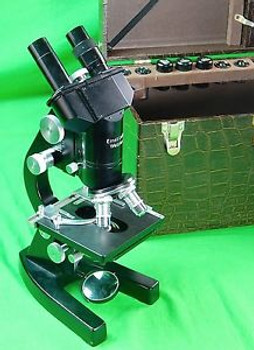

The camera was also equipped with a Galilean viewfinder and lens designed specifically for the new format. Once the decision to produce 35 mm cameras were improved, the shutter and the frame counter of the UR-Leica were changed shutter speeds were increased from 2 to 6, inclusive Z (ie the speed T). The Zeiss Ikon political will be quite the opposite. Nothing had to be unusual: Leitz ordered Barnack always choose the simplest solution. It’s important to put in mind that, the unique feature of Leica equipment (mechanical perfect, but at the same time extremely simple and therefore reliable and durable) is also the result of this dramatic choice: being forced to risk, Leitz wanted to containment risk at minimum. If the attempt had not succeeded Leitz would fail and would have gone the way of all the other factories of the German optics of the first post-war: it would have been absorbed within the Carl Zeiss Group. The decision to enter, without any experience, in the cameras market, threatening the survival of Leitz, was therefore truly courageous.
#1929 ernst leitz wetzlar microscope plus
(To be fair the UR were three, the two already mentioned plus the mother of UR-Leica, and more the prototype of Hand-Kamera 6x4.5).

Or rather, it had produced only one: the UR-Leica, the prototype of Barnack. UR stands for "Urbild" which in German language it means "archetype", equipped it with an motion picture lens: a Carl Zeiss Kino Tessar (the factory where Barnack worked until a few years earlier).īefore that, the Leitz industry had never produced a single camera in its 50 years of life. Barnack built his prototype: the UR-Leica. Who therefore argues that there were 35 mm cameras before to Barnack, says a not exact thing: existed motion picture film cameras, it's true, but they were not 35 mm cameras because the inventor of 35 mm cameras was mr. As the width of the film to 24 mm had now established itself as standard (therefore was not imaginable to be able to change it) Barnack had an idea as simple as brilliant: he transformed the long side of the frame (24 mm) on the short side, while the new long side derived from the sum of two former short sides (18 + 18 = 36 mm). Barnack had found that this kind of film had now reached very high quality, however, the size of the film frame (18x24 mm) was too small to produce high-quality prints. In 1913 Barnack thought of using the motion picture film for his camera. Barnack did not invent the 35mm camera, but invented the camera that has set the standard 35 mm in the photographic industry.

#1929 ernst leitz wetzlar microscope professional
The real merit of Barnack however was to believe that a 35mm camera could become a high quality camera, suitable for professional use. As we shall see Barnack was the inventor of the 35mm format (24x36 mm), using two frames paired cinema format (18x24 mm). Those cameras also, even if they used the motion picture film (which now call 35 mm) were not real 35 mm cameras. However the motion picture film cameras prior to Barnack model were of poor quality, a kind of curiosity for amateurs. It is not correct to say therefore that Barnack was the first to think of using this film for cameras. Not only that: in 1905 there were also some smaller models that used the motion picture film 35 mm ( link). Since 1900 they were marketed the light metal cameras 6x9 format.

It is not true that, before the Barnack’s camera (1913), it does not exist format cameras smaller than heavy wood models.


 0 kommentar(er)
0 kommentar(er)
